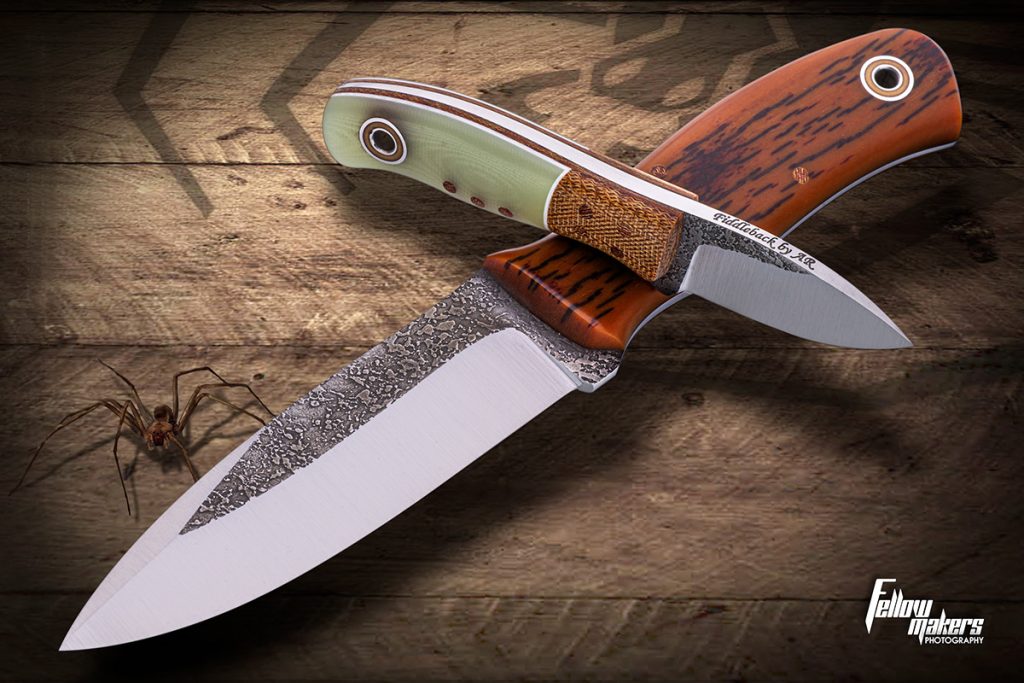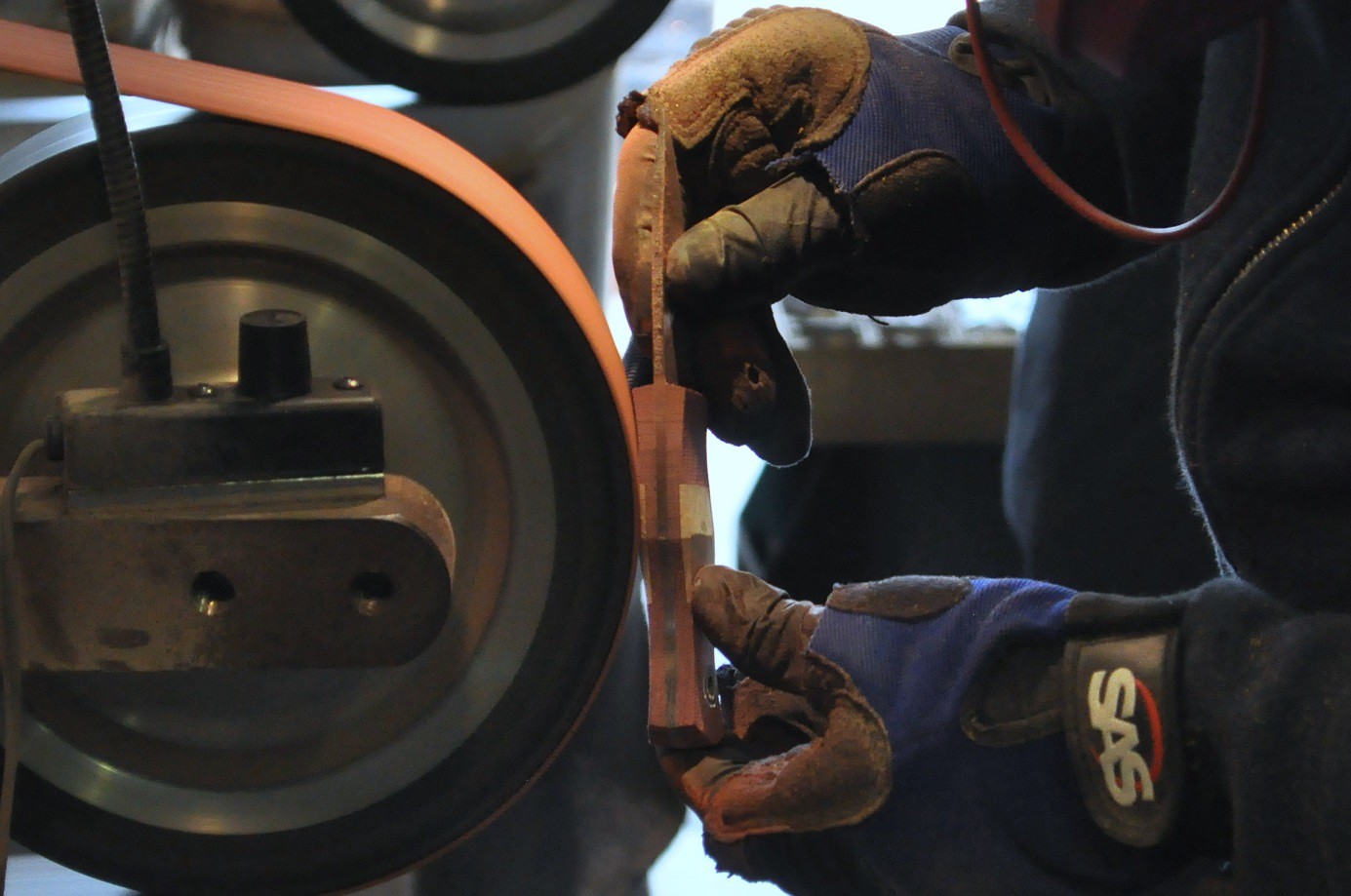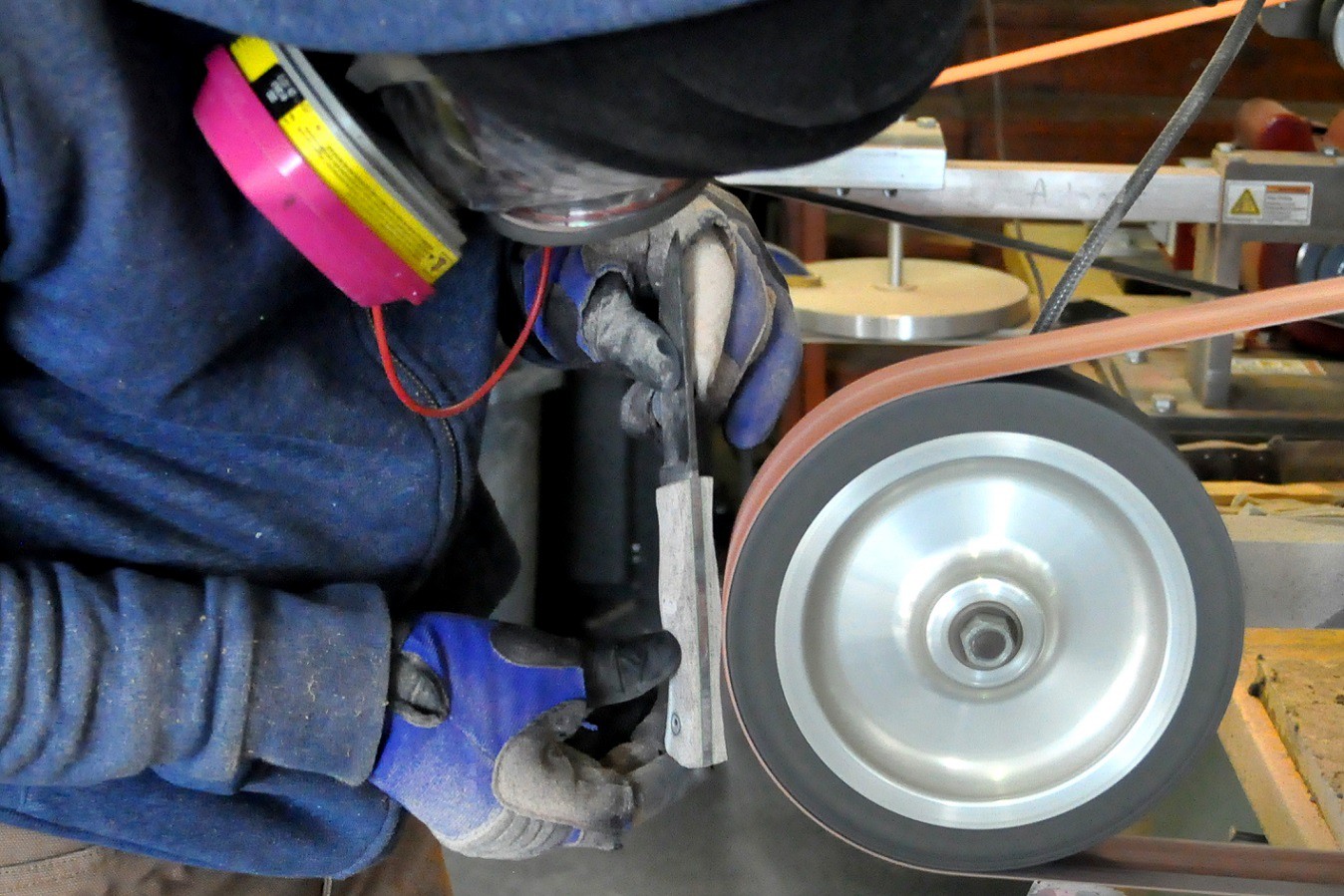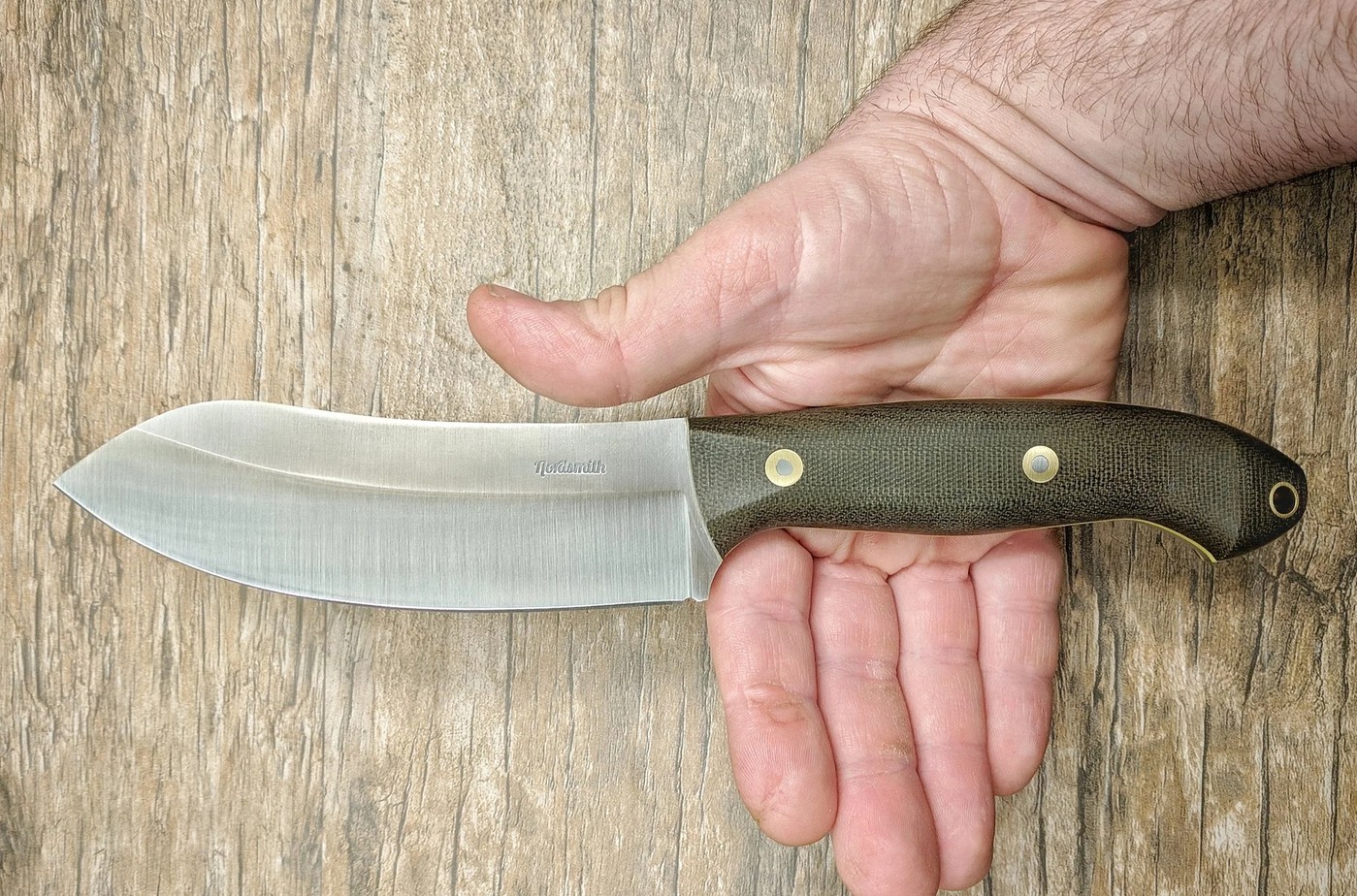I guess it all comes down to perspective. We used to test a lot of knives at Ethan Beckers gatherings back about 13 years ago. Since I was still writing for magazines back then, I was always interested in what was being tested and their outcomes. In fact during one test in 2012 I offered up my Fiddleback Camp knife as a sacrifice on the alter of heat treat testing, when a lot of other maker's knives were chipping and failing, some in spectacular fashion. And the Camp Knife set the standard as to how the heat treat should be, chopping lots of thick green bamboo with no failures and contuing to cut well after, but I digress...
A year after that, I think, David Anderson was just about to launch Nordsmith Knives, and he brought the first Canteen knife there to pass around and let people check it out. I think the pommel area was a little more pronounced than it is on the production model in the pic. There were mixed opinions, some polar. Ranging from "man that's awesome David!" to "I don't know man, I don't tink I want a knife with a penis-shaped handle". I almost drowned on that one too. But the lesson I learned was it's impossible to please everyone at once with the same design, and you just have to stay true to your own philosophies. Because if they are based in reality in real world use, they will find their niches.

 www.knife-gear.com
www.knife-gear.com











